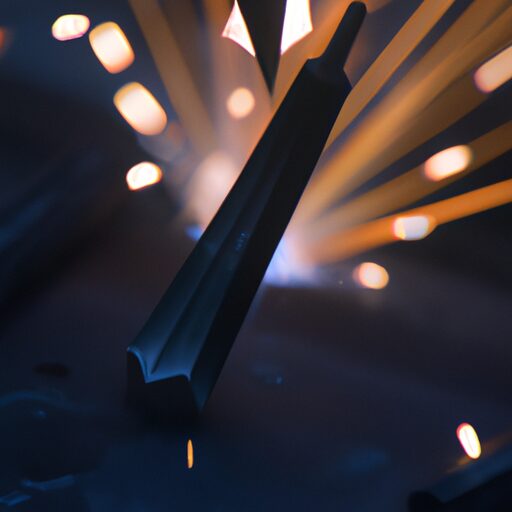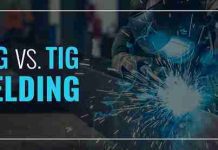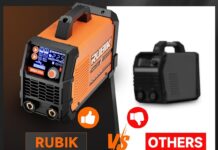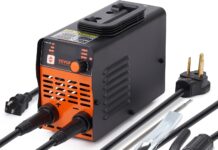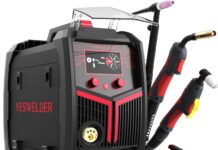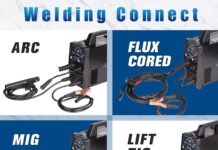When it comes to welding, one size definitely does not fit all. A wide range of welding machines exists, each with its own unique features and capabilities, designed to meet specific welding needs. From the simplicity of stick welding to the precision of TIG welding, and the efficiency of MIG welding, there is a welding machine out there for every project. In this article, we will explore the various types of welding machines and the advantages they offer, helping you make an informed decision for your welding endeavors.
Arc Welding Machines
Arc welding machines are a versatile and widely used tool in the field of welding. These machines utilize electric currents to create an electric arc between an electrode and the workpiece, resulting in the formation of a weld. There are several types of arc welding machines, each with its own unique characteristics and uses.
Shielded Metal Arc Welding (SMAW)
Shielded Metal Arc Welding, also known as SMAW or stick welding, is one of the most commonly used arc welding processes. In this method, a flux-coated electrode is used, which provides a shielding gas and a molten slag to protect the weld area from atmospheric contamination. SMAW is highly versatile and can be used for welding various metals, including steel, cast iron, and stainless steel. Its simplicity and affordability make it suitable for both industrial applications and DIY projects.
Gas Metal Arc Welding (GMAW)
Gas Metal Arc Welding, commonly referred to as GMAW or MIG welding, is an arc welding process that uses a consumable wire electrode and a shielding gas to protect the weld pool from contamination. GMAW is known for its speed and versatility, making it popular in industries such as automotive, construction, and fabrication. It is particularly useful for welding thin sheets of metal, but it can also be used on thicker materials.
Flux-Cored Arc Welding (FCAW)
Flux-Cored Arc Welding, also known as FCAW, is similar to GMAW but uses a tubular electrode filled with flux instead of a solid wire. The flux within the electrode creates a shielding gas and forms a slag, protecting the weld from atmospheric elements. FCAW is commonly used in heavy-duty welding applications, such as shipbuilding and structural steel fabrication. It offers high deposition rates, deep penetration, and can be used in both indoor and outdoor environments.
Submerged Arc Welding (SAW)
Submerged Arc Welding, or SAW, is a welding process where the weld area is submerged in a layer of granular flux. This flux layer protects the weld from atmospheric contamination and also provides additional heat to the weld pool. SAW is primarily used in heavy industry applications, such as pipeline construction, tank fabrication, and welding thick materials. It is known for its high welding speeds and high quality, making it an efficient and reliable method for joining metal structures.
Gas Welding Machines
Gas welding machines utilize gases such as acetylene and oxygen to produce a flame that melts the materials being welded. These machines are commonly used for various welding applications, especially when portability and versatility are required.
Oxy-Acetylene Welding (OAW)
Oxy-Acetylene Welding, also known as OAW or gas welding, is a versatile welding process that uses a flame produced by the combustion of acetylene and oxygen. This flame is directed onto the workpiece, melting the base metal and forming a weld pool. OAW is commonly used for welding or brazing thin materials, such as sheet metal, pipes, and tubes. It offers excellent control and precision, making it suitable for intricate and delicate welding tasks.
Resistance Welding Machines
Resistance welding machines utilize electrical resistance to generate heat and create a weld. These machines are widely used in industries such as automotive, aerospace, and electronics manufacturing.
Spot Welding
Spot welding is a type of resistance welding where two or more metal sheets are joined together by applying pressure and passing a high current through the joint. This causes localized heating and melting, creating a weld nugget. Spot welding is commonly used in automotive manufacturing, as it allows for quick and efficient joining of metal sheets, such as in the assembly of car bodies.
Seam Welding
Seam welding is similar to spot welding but is used to create continuous welds along the length of metal sheets. It involves passing two rotating wheel electrodes over the joint, applying pressure and current to create a continuous weld seam. Seam welding is commonly used in the production of metal containers, pipes, and tubes, where a consistent and leak-free weld is required.
Projection Welding
Projection welding is a resistance welding process used to weld studs, nuts, or other protrusions onto a sheet metal workpiece. It involves passing an electrical current through the protrusion and the workpiece, generating heat and causing the materials to fuse together. Projection welding is commonly used in industries such as appliance manufacturing and automotive assembly.
Laser Welding Machines
Laser welding machines use concentrated beams of high-energy lasers to melt and join metal materials. These machines offer precise control and high welding speeds, making them ideal for various industrial applications.
CO2 Lasers
CO2 lasers are commonly used in laser welding due to their ability to generate high-power laser beams. These lasers emit infrared light, which is well-suited for welding materials such as steel, stainless steel, and aluminum. CO2 lasers offer high welding speeds and can produce deep weld penetration, making them suitable for applications that require efficient and precise welding.
Solid-State Lasers
Solid-state lasers, such as fiber lasers and disk lasers, are becoming increasingly popular in laser welding applications. These lasers utilize a solid medium, such as a crystal or a fiber, to generate the laser beam. Solid-state lasers offer excellent beam quality and can be easily integrated into automated welding systems. They are commonly used in industries such as automotive manufacturing, aerospace, and medical device fabrication.
Electron Beam Welding Machines
Electron beam welding machines utilize a beam of high-velocity electrons to create a weld. This process is performed in a vacuum environment to prevent electron scattering and ensure optimum weld quality. Electron beam welding is known for its deep penetration and high-quality welds, making it suitable for applications that require precise and defect-free joints. It is commonly used in industries such as aerospace, defense, and power generation.
Plasma Arc Welding Machines
Plasma arc welding machines use a highly concentrated ionized gas called plasma to create a weld. The plasma is formed by passing a high voltage current through a gas, such as argon or nitrogen, and it reaches temperatures hot enough to melt metal. Plasma arc welding is known for its versatility, as it can be used on a wide range of materials and thicknesses. It offers fast welding speeds and excellent quality, making it suitable for applications in industries such as automotive, aerospace, and metal fabrication.
Friction Welding Machines
Friction welding machines create a weld by generating heat through mechanical friction between two workpieces. This process involves rotating one workpiece against another while applying pressure, causing the materials to heat up and join together. Friction welding is particularly useful for joining dissimilar materials and can produce strong and reliable welds. It is commonly used in industries such as automotive, aerospace, and construction.
Ultrasonic Welding Machines
Ultrasonic welding machines utilize high-frequency sound waves to create heat and join two materials together. This process is commonly used for welding thermoplastics, such as PVC, ABS, and polypropylene. Ultrasonic welding allows for rapid, clean, and precise joining of materials without the need for additional adhesives or fasteners. It is commonly used in industries such as electronics, medical devices, and packaging.
Induction Welding Machines
Induction welding machines use electromagnetic induction to generate heat and create a weld. This process involves placing the workpiece within an alternating magnetic field, which induces electrical currents in the material and causes it to heat up and melt. Induction welding is commonly used for joining metal tubes, pipes, and other cylindrical components. It offers fast heating rates, precise control, and minimal distortion, making it suitable for high-speed production processes.
Thermit Welding Machines
Thermit welding machines use a chemical reaction between a metal oxide and aluminum or magnesium to generate heat and create a weld. This process involves placing a thermite mixture in a crucible, igniting it, and allowing the reaction to produce molten metal. The molten metal is poured into a mold, where it fuses two workpieces together to form a weld. Thermit welding is commonly used for joining railroad tracks, pipes, and other large metal structures. It offers excellent strength and durability and is particularly useful for outdoor or remote welding applications.
In conclusion, the field of welding offers a wide range of machines and processes, each with its own set of advantages and applications. From the versatility of arc welding machines to the precision of laser welding, and the simplicity of gas welding to the reliability of resistance welding, there is a welding machine available to suit almost any welding need. Whether you are tackling a DIY project or working in an industrial setting, understanding the different types of welding machines can help you choose the most appropriate method for your specific welding requirements.


